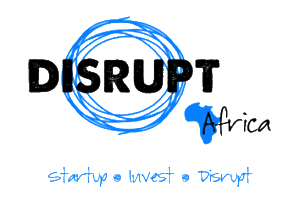Spot ETFs are bringing in major inflows and analysts see big upside potential ahead, likely with a big price surge – we’ll get into the details below.
Meanwhile, PlutoChain ($PLUTO) could bring hybrid L2 tech to potentially solve Bitcoin’s biggest problem—scalability. As a Layer-2 solution, it might turn Bitcoin into much more than just a store of value.
Let’s dive in.
Ethereum Price Prediction: Will ETH Hit $10,000 Sooner Than Expected With Surging Inflows?
Right now, Ethereum is trading at around $2,709.15, with a slight 0.024% dip in the last 24 hours. The price has fluctuated between $2,680.93 and $2,785.84 during this period.
Ethereum is seeing a massive wave of accumulation, with long-term holders scooping up 330,705 ETH (worth around $883 million) in a single day on February 7, 2025.
This brings the total ETH held by accumulation addresses to 19.24 million ETH, which marks a 20.55% increase this year — even as ETH’s price dipped 20.75% during the same period.
A spike in inflows to these addresses is often seen as a bullish signal. In fact, a similar surge in February 2023 preceded a 35% price jump over the next two months.
With these latest developments, Crypto analyst That Martini Guy ₿ predicts that Ethereum will reach $10,000 by April 2025.

Here’s How PlutoChain’s ($PLUTO) Hybrid L2 Approach Might Make Bitcoin Faster, Cheaper, and More Scalable
Bitcoin’s biggest challenges—slow transactions and high fees—have long made it difficult to use as a daily payment method. With block confirmations taking around 10 minutes, Bitcoin struggles to keep up with modern financial demands.
PlutoChain ($PLUTO) is a Layer-2 solution that could fix these problems. By operating on its own high-speed chain with 2-second block times, PlutoChain could enable instant transactions and make Bitcoin more suitable for everyday payments, microtransactions, and cross-border transfers.

Cost efficiency is another key advantage. High fees have limited Bitcoin’s usability, but PlutoChain could drastically lower transaction costs and make sure that users can send and receive BTC affordably.
Beyond payments, PlutoChain is EVM-compatible, meaning it can support DeFi applications, NFTs, and AI-powered blockchain tools, which could expand Bitcoin’s role beyond just a store of value.
Security remains a priority. PlutoChain has undergone rigorous audits by SolidProof, QuillAudits, and Assure DeFi to ensure its reliability.

Its testnet has already demonstrated strong performance by processing over 43,200 transactions in a single day.
Unlike Bitcoin’s miner-controlled network, PlutoChain introduces a decentralized governance model, where users can propose and vote on network upgrades. This way the system remains adaptable and community-driven.
By solving Bitcoin’s speed and cost issues while unlocking new use cases, PlutoChain could be the key to making Bitcoin more practical, scalable, and ready for mass adoption.

The Bottom Line
While Ethereum’s surge in accumulation and strong ETF inflows point to growing institutional confidence, the next few months will be crucial in determining if it can reach $10,000.
As Ethereum builds momentum, PlutoChain ($PLUTO) might tackle Bitcoin’s biggest challenges. It offers more than just faster and cheaper transactions—it’s a full ecosystem upgrade and it might be the breakthrough Bitcoin needs for mainstream adoption.
Disclaimer: It’s important to note that participating in presales carries risks, including market volatility and potential project delays. Please conduct thorough research, understand the risks of market volatility, and seek professional advice before engaging with any blockchain project. Future-oriented statements are speculative and may not be modified.

